How to easily tell the difference between crochet puffs, bobbles, popcorns and clusters
With so many variations available, it can be confusing to tell the difference between crochet puffs, bobbles, popcorns and clusters. This blog post will help you tell which stitch you’re making.
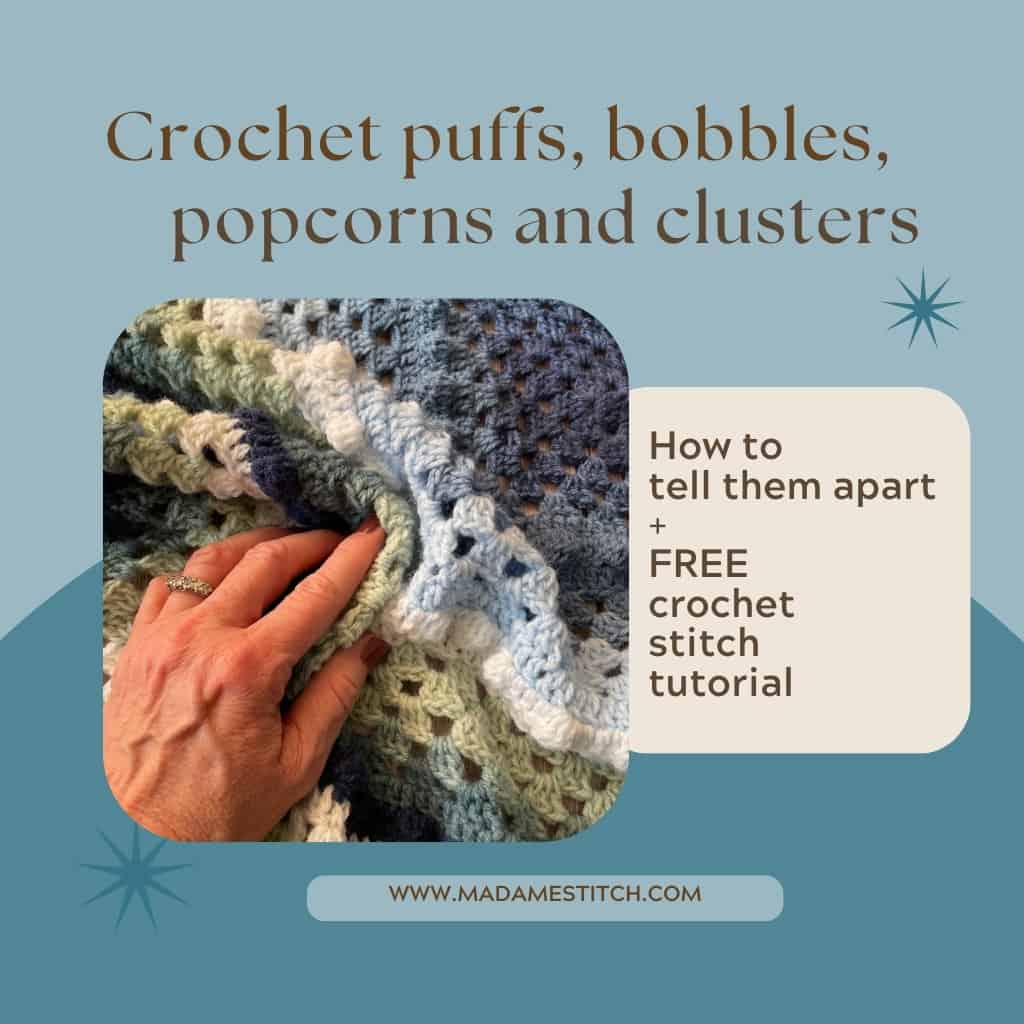
How to easily tell the difference between crochet puffs, bobbles, popcorns and clusters
Have you ever wondered what the difference is between puffs, bobbles, popcorns and clusters? It can be hard to tell, especially when it seems the crochet world uses these terms interchangeably.
As it turns out, they are quite different and each one has a unique texture. But, because designers will take liberties with naming the stitches they’ve used, it can be difficult to tell the difference between puffs, bobbles, popcorns and clusters.
In this post, I’ll talk about how they’re different from each other, provide the instructions to make each stitch, and give you tips on how to recognize them when you see them.
What are these stitches?
According to the Crochet Stitch Dictionary, puffs, bobbles, popcorns and clusters are considered “working several stitches together”. Typically, these stitches that are worked together combine to create a new stitch that’s meant to add texture and visual interest to the crochet fabric.
How are they different from decreases like “dc3tog”? A “dc3tog” or similar where the stitches are worked together are included to decrease the stitch count. In the case of puffs, bobbles, popcorns and clusters, stitches and chains are worked around these decorative stitches to maintain an even stitch count.
Why are these stitches so often confused?
Puffs, bobbles, popcorns and clusters are confused for the following reasons:
- Designers will take liberties with naming these stitches in their designs. They may alter the stitches to get the look they’re after in their design but still call them by the original name.
- Sometimes these stitches are confused by both designers and makers. It happens!
- Within the family of puffs, bobbles, popcorns and clusters, there are so many possibilities for variation.
The most reliable way to ensure you’re working the correct stitch is to refer to the stitch description in a designer’s pattern. Detailed information about puffs, bobbles, popcorns and clusters is routinely included in the Special Stitches section.
What’s the difference between puffs, bobbles, popcorns and clusters?
More detailed and decorative stitches are not as universal as basic stitches which are understood to be made a certain way every time.
Here are some ways these stitches can be different from one another:
- The basic stitch used as the foundation for the stitch. This can include anything from single crochet to treble crochet and taller.
- How they’re used in crochet design: Clusters and puffs sit a little closer to the surface of the fabric while bobbles and popcorns protrude prominently for a more dramatic effect.
- Whether the steps of the stitches are worked in the same stitch or over consecutive stitches. As a general rule, puffs, bobbles and popcorns are worked all in the same stitch while the cluster is worked over several stitches. However, clusters can be worked all in the same stitch just like its cousins.
Again, you’ll find specifics about these stitches in a pattern’s Special Stitches section whether or not the stitch has been adapted or varied.
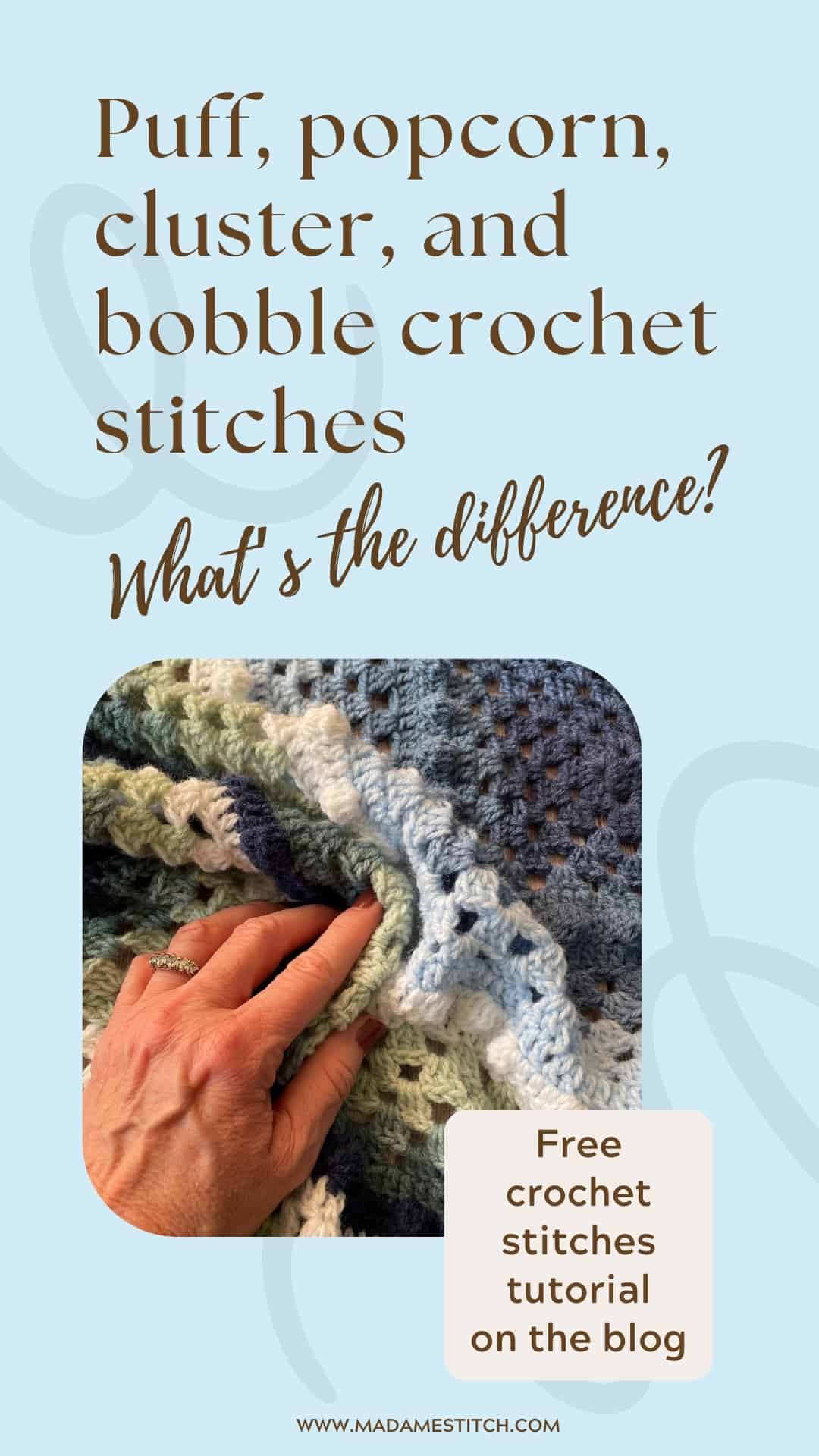
Let’s learn to make puffs, bobbles, popcorns and clusters.
The Puff Stitch
- The Puff stitch is a group of half double crochets joined at both the top and bottom of the stitch. A puff stitch is reversible so it looks the same on both sides of the fabric. It adds texture and decoration to the fabric.
- Figure 1: YO, insert hook in the indicated st, YO, pull up a loop, [YO, insert hook in the same st, YO, pull up a loop] twice (7 loops on the hook).
- Figure 2: YO, pull through all the loops on the hook. Sometimes a chain is worked to close the puff.
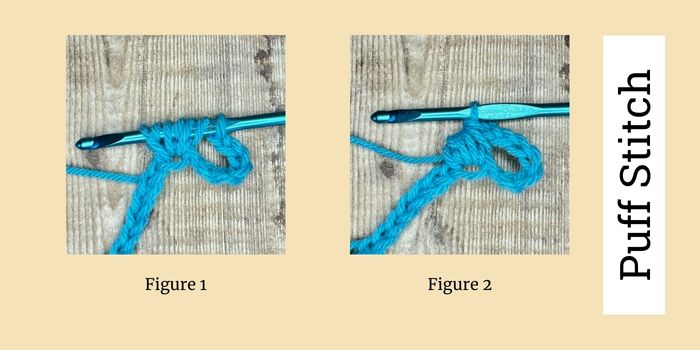
The Bobble Stitch
- The Bobble stitch is a group of double crochet or longer joined at both the top and bottom of the stitch; typically preceded and followed by shorter stitches to make the bobble stand out. It’s worked on the wrong side of the fabric and “pops” out to the right side of the fabric, adding texture.
- Figure 1: YO, insert hook in the indicated st, YO, pull up a loop, YO, pull through 2 loops, [YO, insert hook in the same st, YO, pull up a loop, YO, pull through 2 loops] twice (4 loops on the hook).
- Figure 2: YO, pull through all the loops on the hook. Ch 1 to close the bobble.
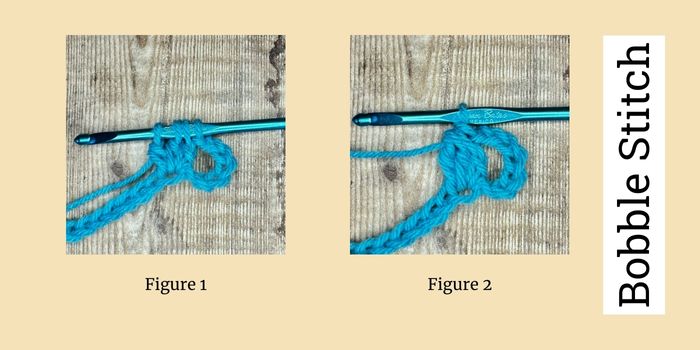
The Popcorn Stitch
- The Popcorn stitch is 3 or more double crochet or taller stitches worked in the same place with the 1st and last stitch joined. A popcorn stitch is worked on the right side of the fabric and is more prominent than its cousin the bobble stitch.
- Figure 1: Work 4 double crochets (or the number required by the pattern) in the same stitch.
- Figure 2: Remove the working loop from the hook, insert the hook from front to back through the top of the 1st double crochet worked, place the working loop back on the hook and pull through.
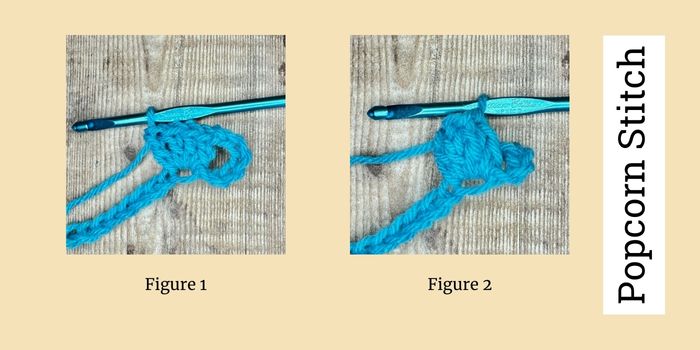
The Cluster
- A Cluster is a group of stitches joined closely at the top. Many times, a cluster is designated as “tog”, such as “dc3tog”. This is the case when the partial stitches are worked in consecutive stitches. However, a cluster can worked in the same stitch much like the bobble. The cluster stitch is reversible so it works on both sides of the fabric. It creates a subtle open work fabric if repeated.
- Figure 1: YO, insert hook in the indicated st, YO, pull up a loop, YO, pull through 2 loops, [YO, insert hook in the next st, YO, pull up a loop, YO, pull through 2 loops] twice (4 loops on the hook).
- Figure 2: YO, pull through all loops.
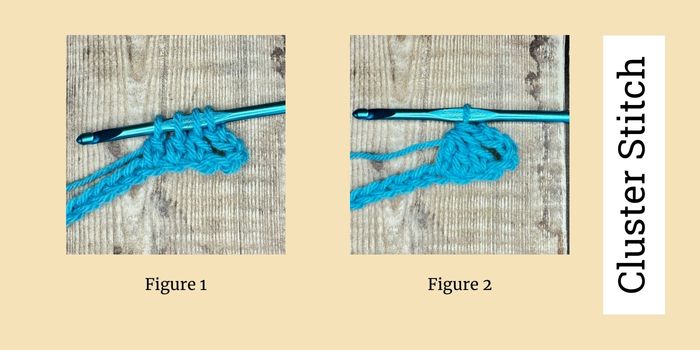
Resources
If you’d like to read more about puffs, bobbles, popcorns and clusters, here are some great resources:
- Crochet Stitch Dictionary by Sarah Hazell (p. 28-29) – available as paperback online
- Sweet Potato 3
- Dora Does
- Sarah Maker
- American Crochet Association
- Interweave

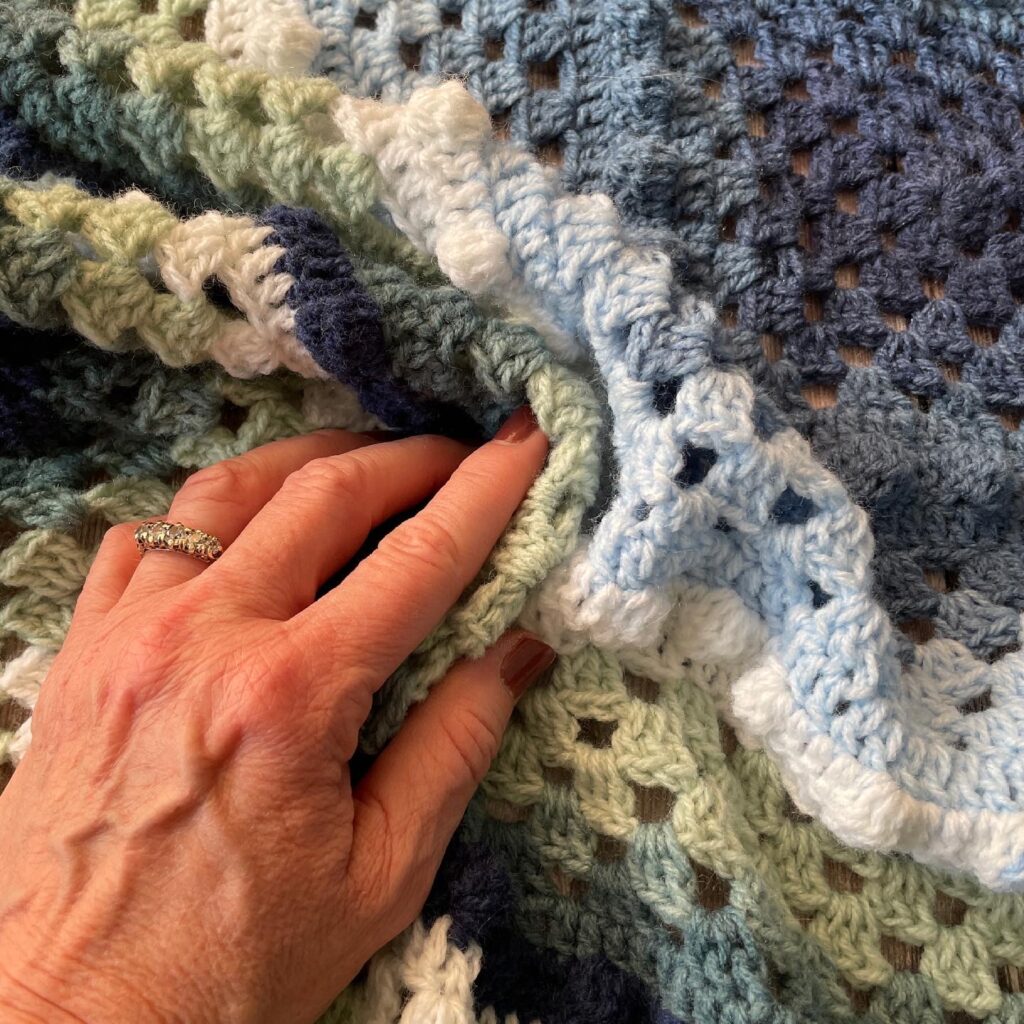
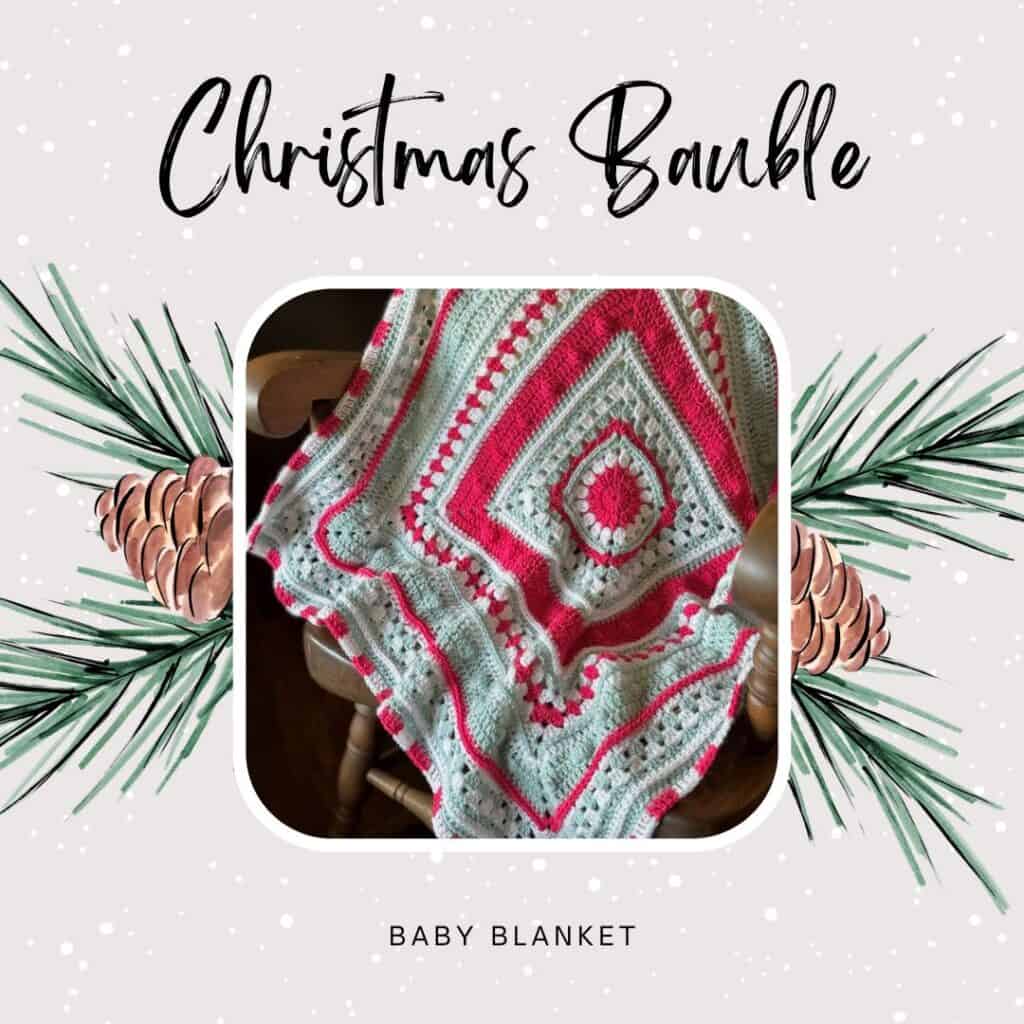
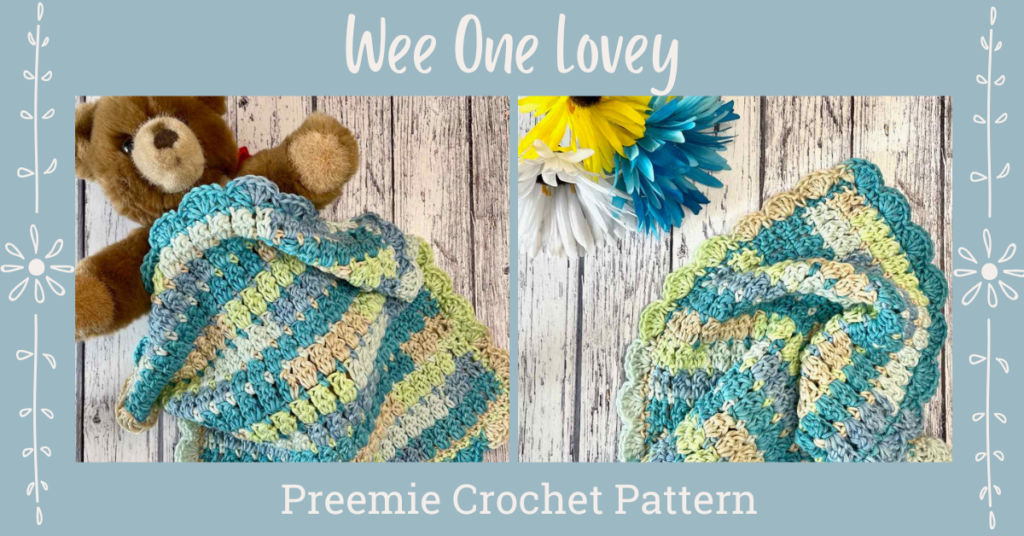
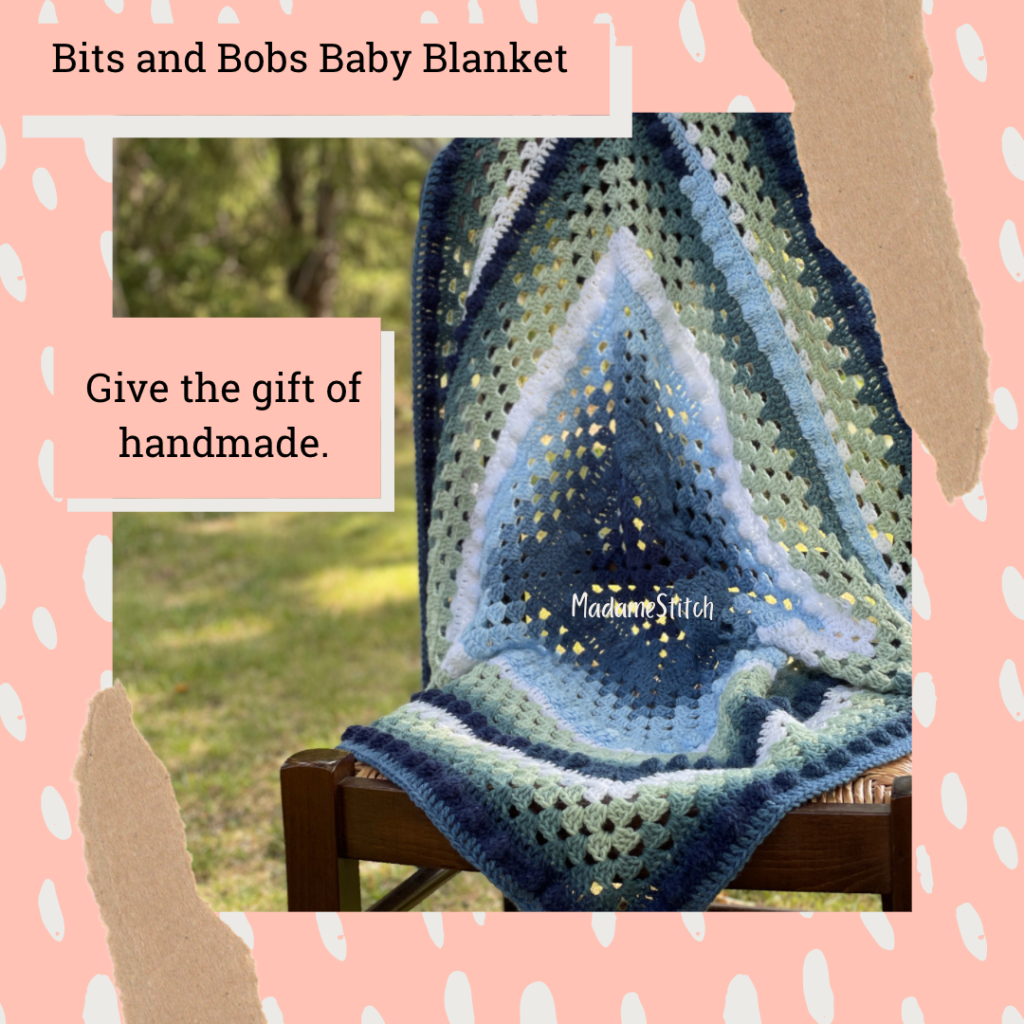
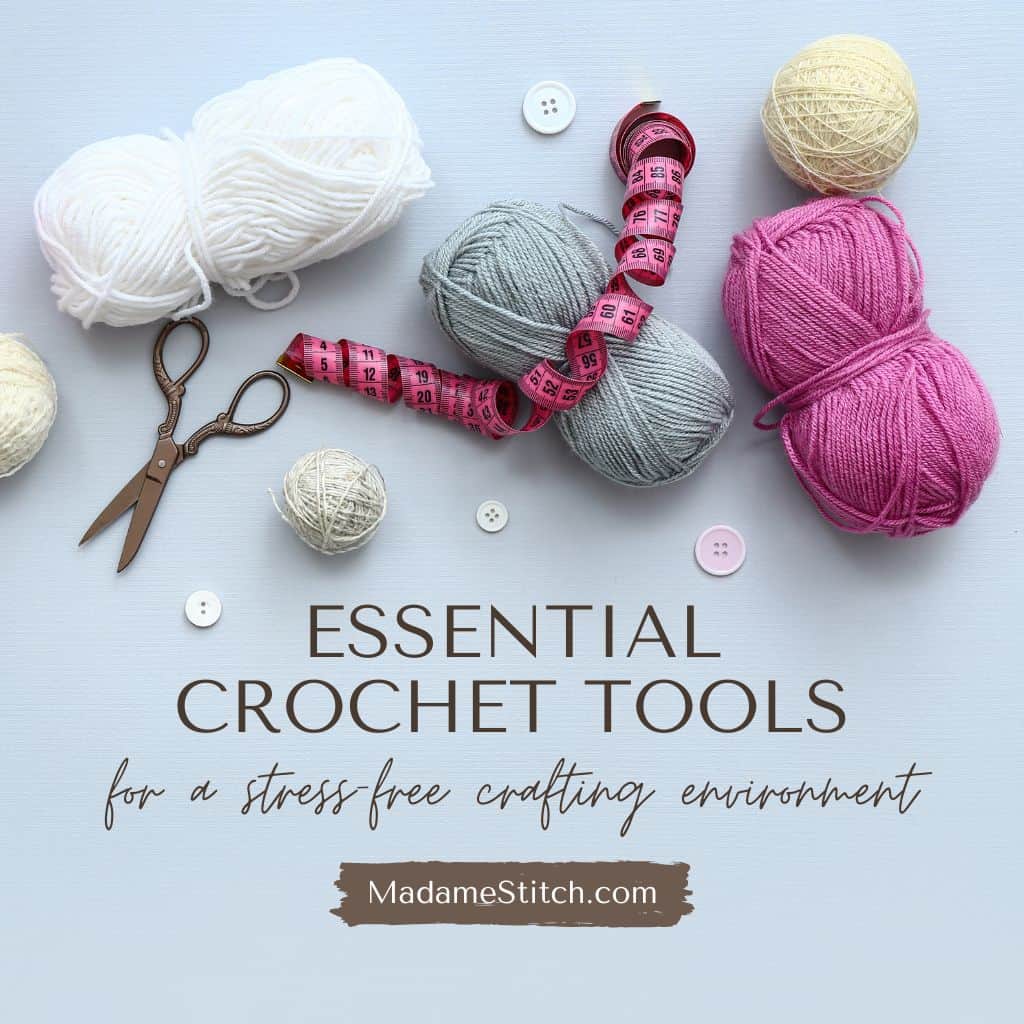
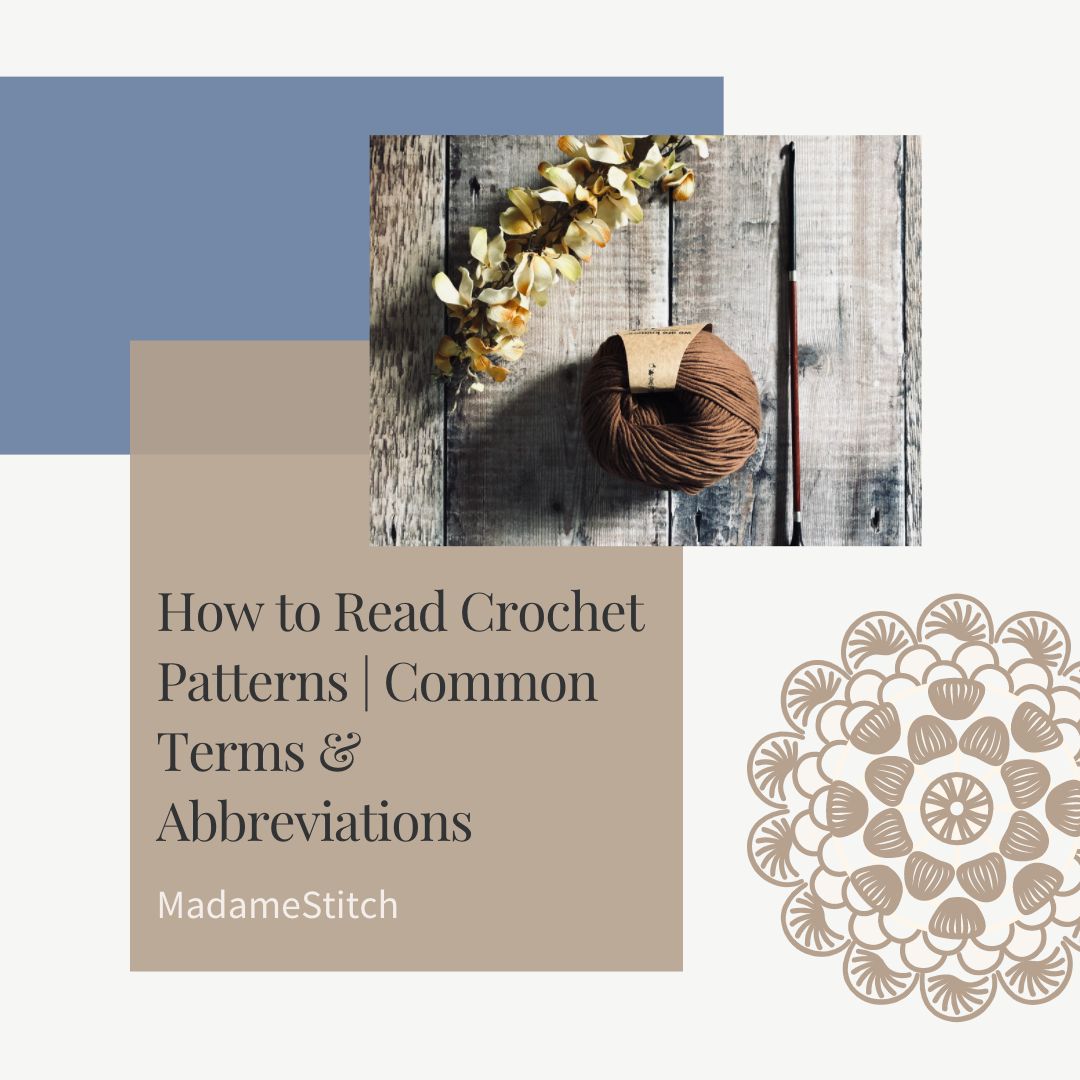
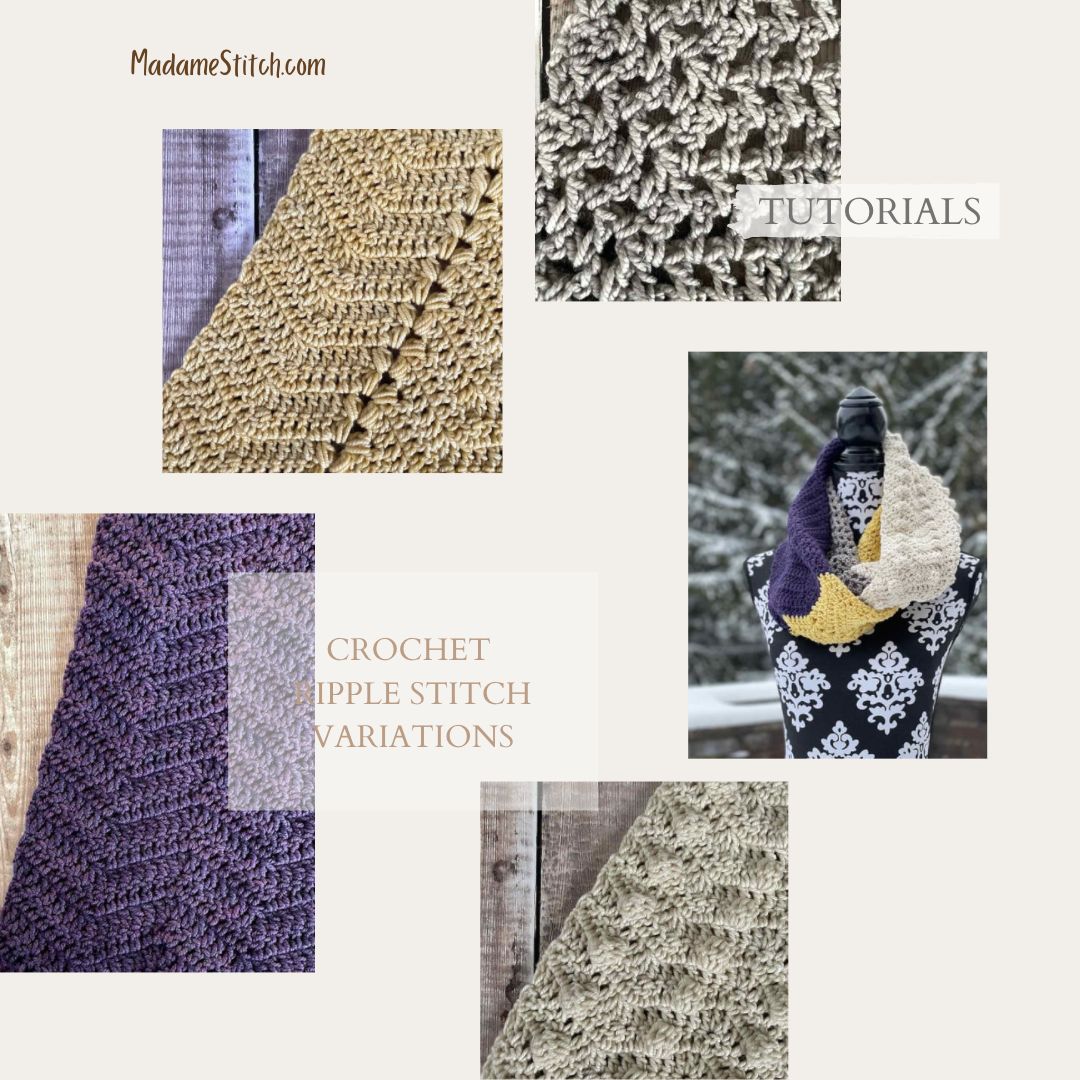
One Comment